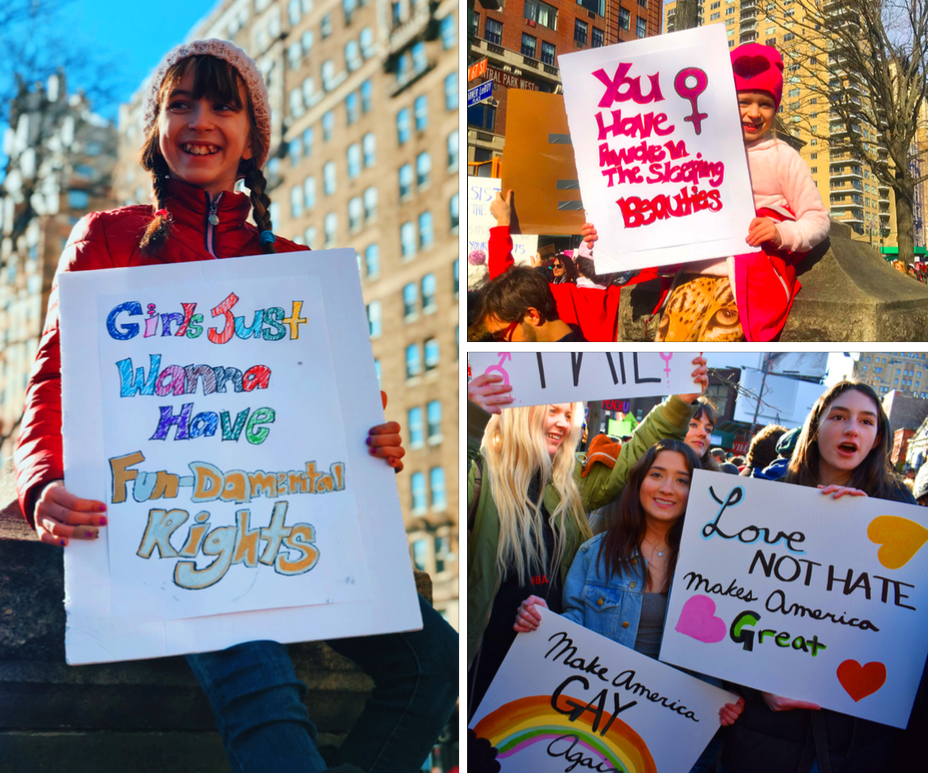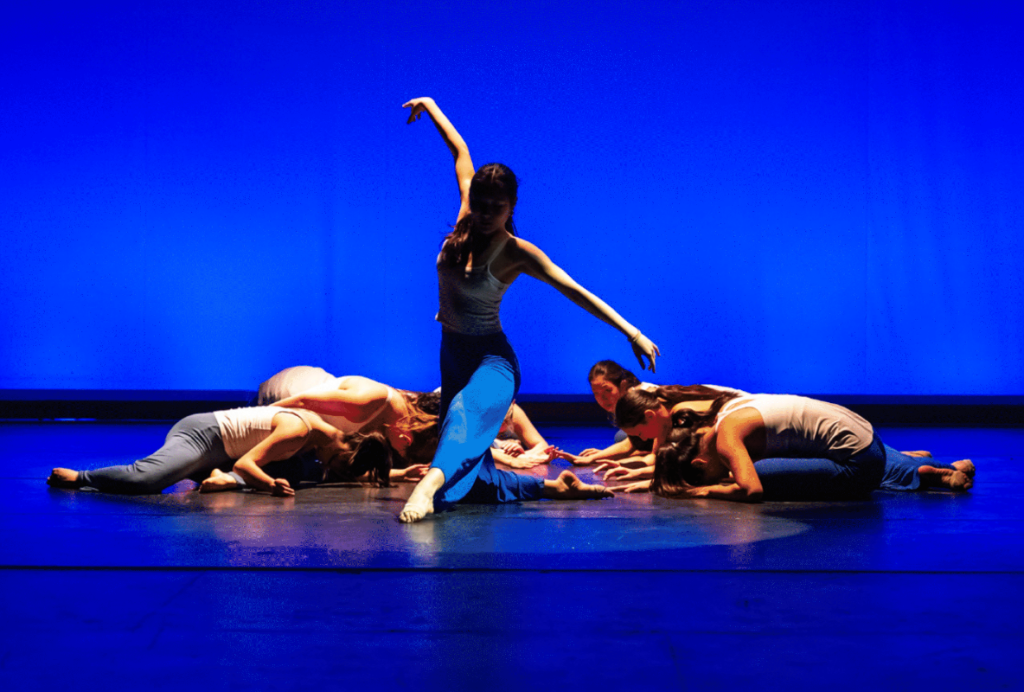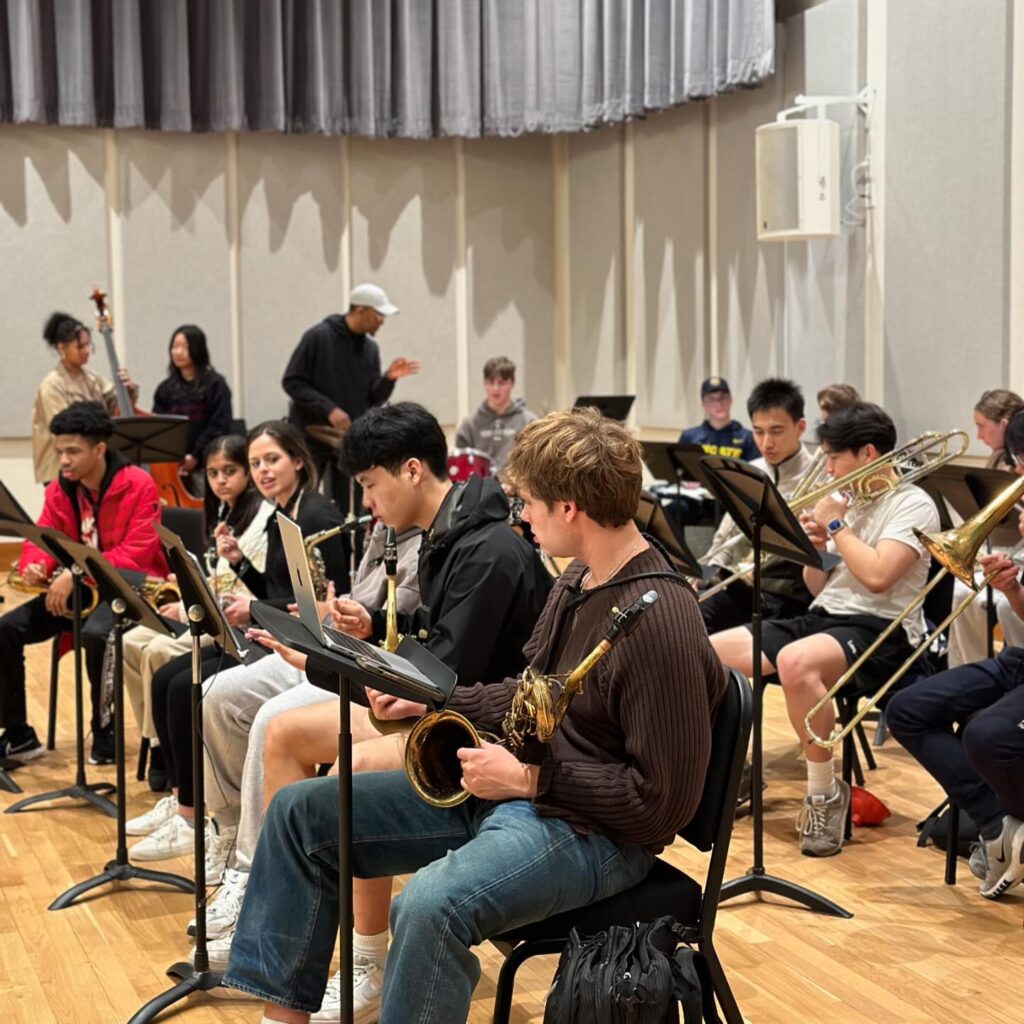
Choate students (pictured: Jade Watson ’19, Leila Cohen ’19, and Sarah Bonnem ’19) took photos while attending Women’s Marches in New York City and Hartford in support of women’s equality.
On January 20, Choate sent a bus full of students to participate in the Women’s March in Hartford, Connecticut. They joined thousands of other activists who spoke about issues ranging from reproductive rights to racial equality to issues in the LGBTQ+ community. Art was used throughout this event, through posters, song, sculptures, fashion and much more. It was one of the main tools of expression, connection, and change that made this event so powerful. Trademark pieces of art seen at many protests, this one included, are signs and posters.
Aarthi Katakam ’21 told me about her sign which read “Women” on it, but instead of the letter “E” she had written a mathematical expression that represents E. She told me about the significance of the sign, “The reason I put that there was because the issue I am worried about is the representation of women in STEM. I just wanted to express my thoughts and feelings on the matter through a poster.” Katakam spoke about the political atmosphere at the event. “I saw a lot of anti-Trump signs. One of my favorites said, ‘Racist, Sexist, Callous.’” She also spoke about the diversity of political issues on the signs. “There was a lot of intersectionality there. There were a lot of posters about Black Lives Matter and the LGBTQ+ community.”
Iris Parsons ’21 also attended the march, and her sign said, “Angry Women Will Change the World.” Of its significance, she said, “It is saying that we are here, we are angry, and we are doing something about it, and I found that empowering.” Other signs that were favorites of Parsons were “Girls Just Wanna Have Fun-damental Human Rights” and “We Need to Talk about the Elephant in the Womb.” Parsons said, “I like the ones that have word play and are clever. They really make you think.”
Parsons also liked the sign, ”What is the American dream without dreamers?” Parsons said she liked that one, “because everyone is always talking about the American dream, but you need someone to dream.” Art was also in the event in many other ways. Parsons said, ”Fashion was important in this event from the colors people chose to the iconic hats.”
Above the crowd floated big balloons spelling out “resist” and a giant statue of liberty as a black woman. Music was also a big part, from the crowd singing songs and yelling chants to a circle of drummers. This whole event was about expression, change, and community; art is one of the greatest tools of expression, change, and community. Being there felt like art was not just a tool used by activists — there was something more. Katakam captured the essence of art at the Women’s March, “In a sense the whole event was a work of art, all these different people gathered trying to evoke change. It was messy, it was loud, and it was just beautiful.”



